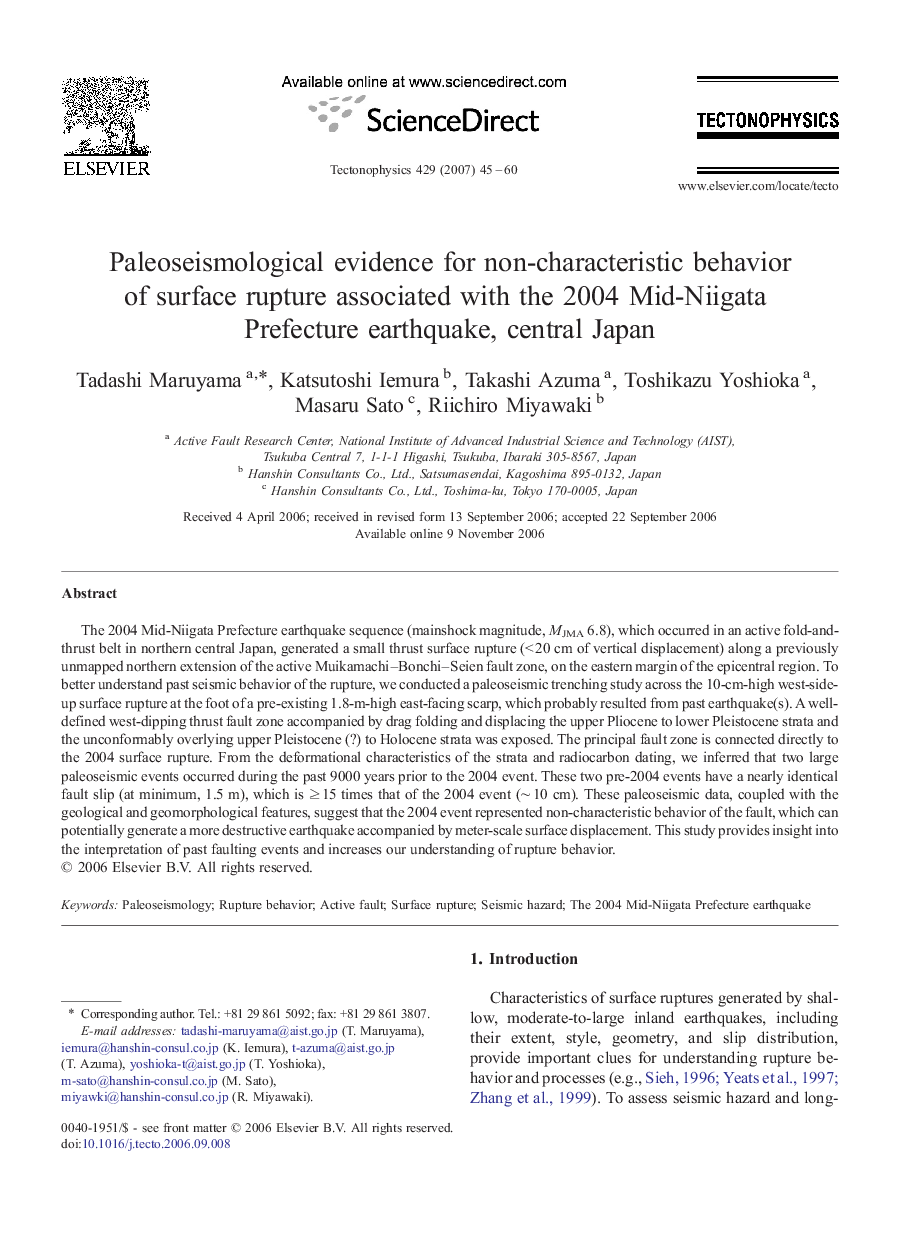| Article ID | Journal | Published Year | Pages | File Type |
|---|---|---|---|---|
| 4694992 | Tectonophysics | 2007 | 16 Pages |
Abstract
The 2004 Mid-Niigata Prefecture earthquake sequence (mainshock magnitude, MJMA 6.8), which occurred in an active fold-and-thrust belt in northern central Japan, generated a small thrust surface rupture (< 20 cm of vertical displacement) along a previously unmapped northern extension of the active Muikamachi-Bonchi-Seien fault zone, on the eastern margin of the epicentral region. To better understand past seismic behavior of the rupture, we conducted a paleoseismic trenching study across the 10-cm-high west-side-up surface rupture at the foot of a pre-existing 1.8-m-high east-facing scarp, which probably resulted from past earthquake(s). A well-defined west-dipping thrust fault zone accompanied by drag folding and displacing the upper Pliocene to lower Pleistocene strata and the unconformably overlying upper Pleistocene (?) to Holocene strata was exposed. The principal fault zone is connected directly to the 2004 surface rupture. From the deformational characteristics of the strata and radiocarbon dating, we inferred that two large paleoseismic events occurred during the past 9000 years prior to the 2004 event. These two pre-2004 events have a nearly identical fault slip (at minimum, 1.5 m), which is â¥Â 15 times that of the 2004 event (â¼Â 10 cm). These paleoseismic data, coupled with the geological and geomorphological features, suggest that the 2004 event represented non-characteristic behavior of the fault, which can potentially generate a more destructive earthquake accompanied by meter-scale surface displacement. This study provides insight into the interpretation of past faulting events and increases our understanding of rupture behavior.
Related Topics
Physical Sciences and Engineering
Earth and Planetary Sciences
Earth-Surface Processes
Authors
Tadashi Maruyama, Katsutoshi Iemura, Takashi Azuma, Toshikazu Yoshioka, Masaru Sato, Riichiro Miyawaki,
